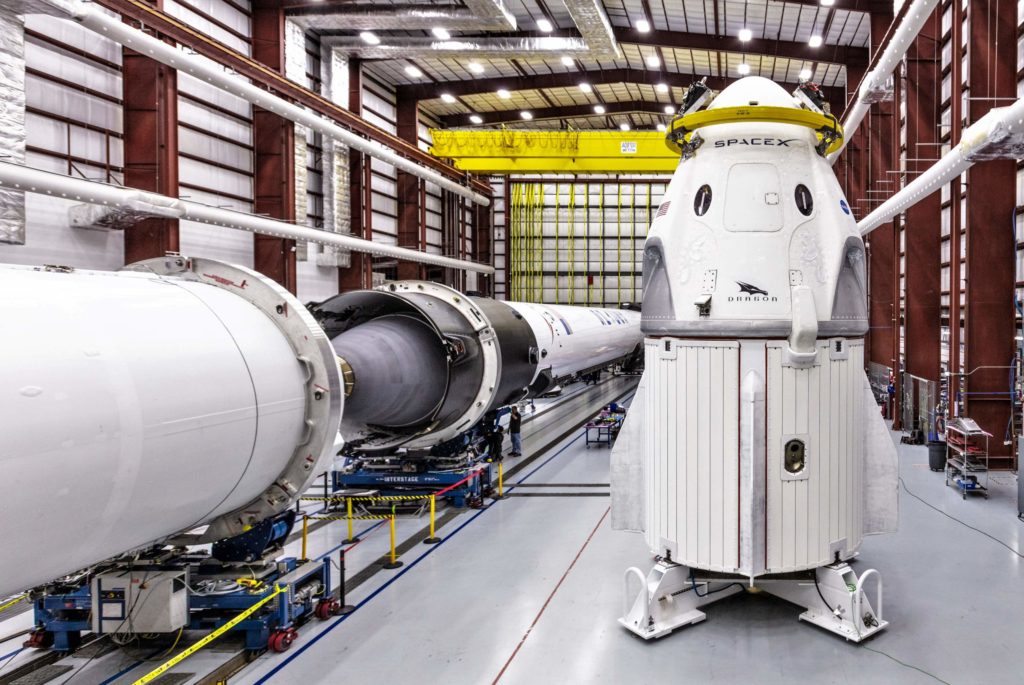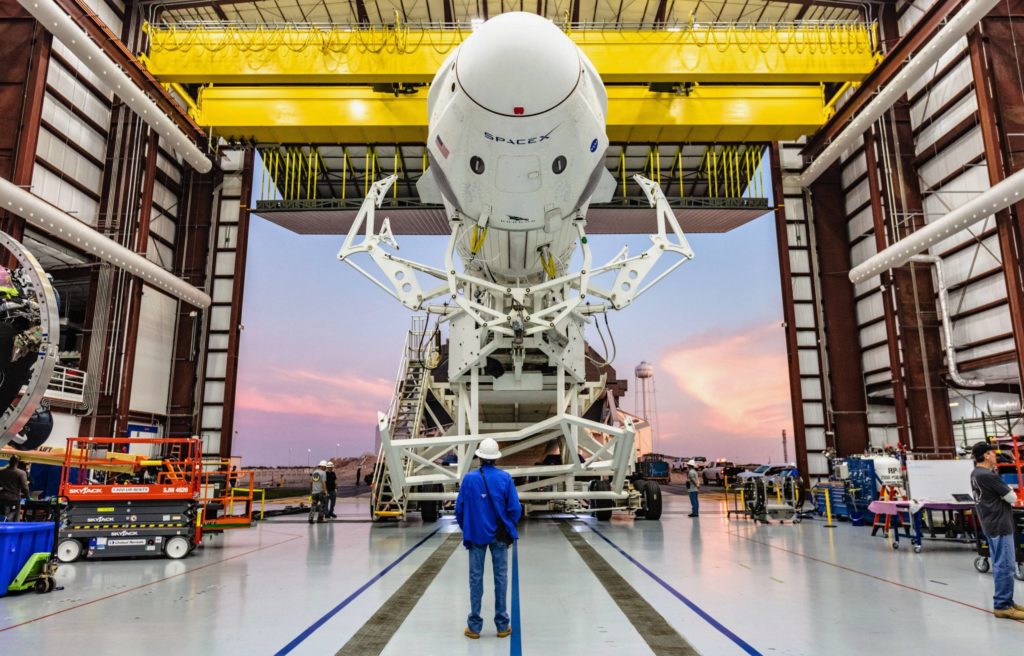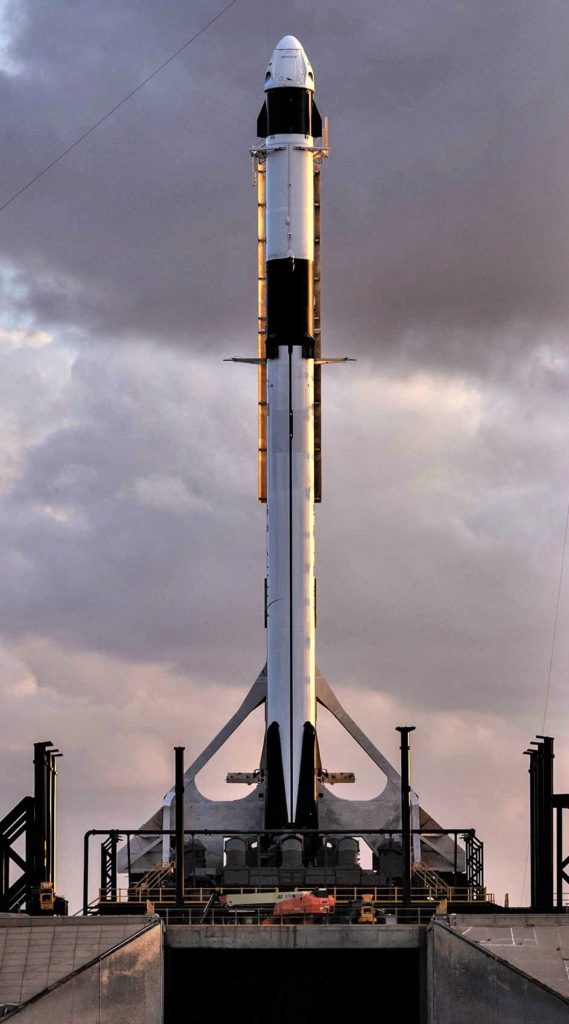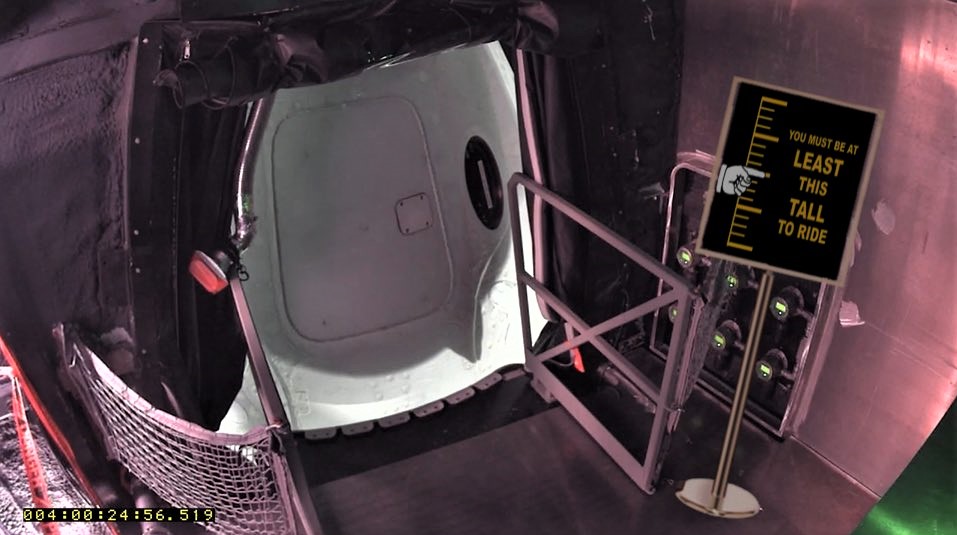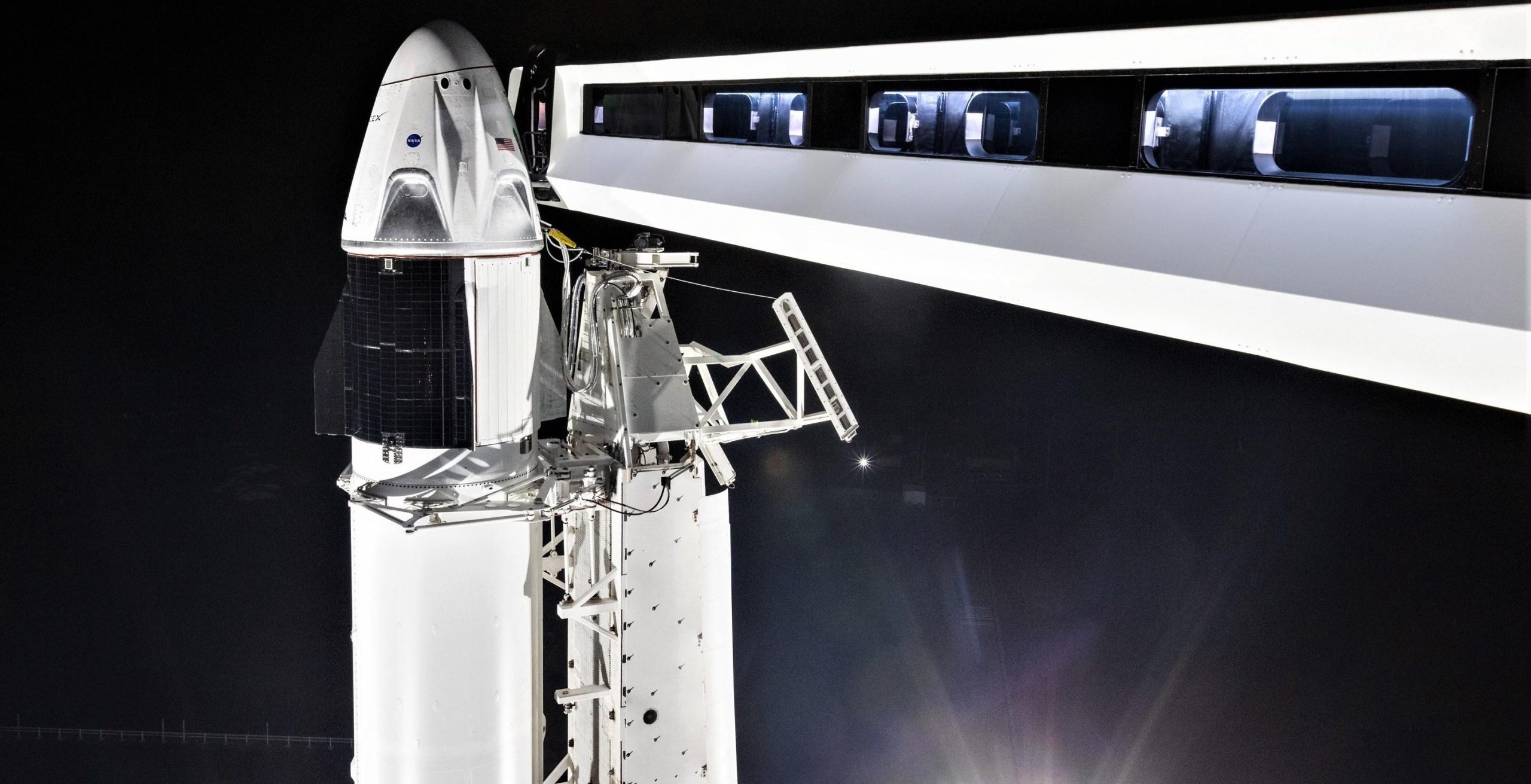
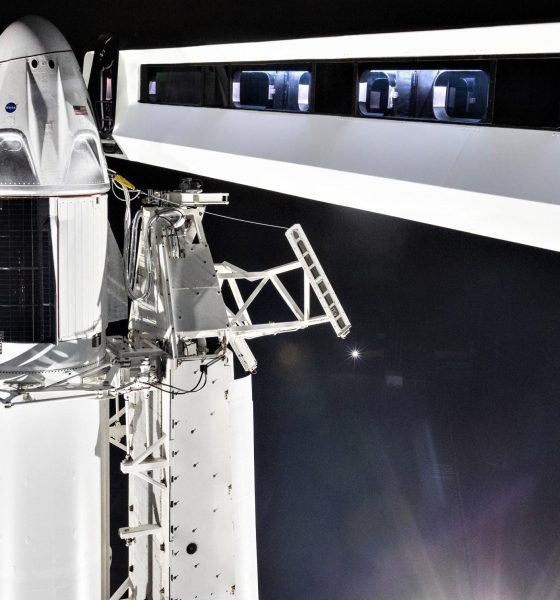
SpaceX
SpaceX shows off Crew Dragon atop Falcon 9 as govt shutdown kills momentum
Late last week, SpaceX published official photos of Crew Dragon’s first trip out to Launch Complex 39A (Pad 39A) atop its specially-certified Falcon 9 Block 5 rocket, showing off what looks to have been a successful integrated fit check and an important precursor to the debut launch of the company’s first human-rated spacecraft.
Despite the obvious readiness of SpaceX’s hardware and facilities for this historic mission, the company has been met with a brick wall that has almost indefinitely killed almost all forward momentum towards Crew Dragon’s first trip to orbit, appearing in the form of elected leaders so inept that they have failed to properly fund the bureaucracies underpinning the vast majority of the federal government for more than three weeks, NASA included.
About a month away from the first orbital test flight of crew Dragon https://t.co/U01Oxu3M7E
— Elon Musk (@elonmusk) January 5, 2019
NASA has been severely impacted by the shutdown since it began on Dec 21 and has been operating at barely 5% capacity since then, just shy of the equivalent of throwing a bucket of wrenches into an intricately complex machine. Put simply, the entire agency is more or less at a standstill, aside from the most basic of operations and the support of spacecraft and facilities that cannot pause for the convenience of childish games of political brinksmanship. Among the parts of the agency harmed are those involved with the late-stage Commercial Crew Program (CCP) certification work and general program support, directly translating into an almost indefinite pause on Crew Dragon’s autonomous launch debut, known as DM-1.
Science-funding agencies that are open: DOE, DOD, and NIH.
The big ones that are affected: NSF, NIST, NOAA, NASA, EPA, USGS, FDA, Smithsonian, USDA@sciencemagazine has a rundown of the impact of the shutdown for agencies with a science focus https://t.co/uAPz7AWoVT
— Maryam Zaringhalam, PhD (@webmz_) January 5, 2019
Despite the ironic fact that their operations would likely be considered critical and thus be free of the brunt of a government shutdown’s impact once SpaceX’s Crew Dragon and Boeing’s Starliner are demonstrated and declared operational, almost all conceivable programmatic aspects of Commercial Crew Program currently fall into non-critical categories as both providers prepare for their first uncrewed demonstration missions to orbit. These autonomous demo missions will be immediately followed by crewed demonstration missions in which real NASA astronauts will fly to the International Space Station before NASA can finally complete the operational certification of Crew Dragon and Starliner.
Simultaneous ironic and gratingly painful, the first operational crewed launches are explicitly dependent on certifications to immediately follow crewed demonstration launches, which themselves are no less dependent upon the receipt of NASA certifications after each spacecraft’s first uncrewed demonstration launch. As such, every delay to CCPs uncrewed demo launches will likely translate into a near 1:1 delay (if not worse) for the operational debut of both spacecraft, already operating dangerously close to the edge of assured access to the ISS thanks to a range of delays caused by technical challenges and NASA sluggishness.
- An impressive view of Crew Dragon (DM-1), Falcon 9 B1051, and its upper stage. (SpaceX)
- The integrated DM-1 Crew Dragon ‘stack’ rolled out to Pad 39A for the first time in the first few days of 2019. (SpaceX)
- Falcon 9 B1051 and Crew Dragon vertical at Pad 39A. (SpaceX)
- The view of Crew Dragon from SpaceX’s freshly-installed Crew Access Arm at Pad 39A. (SpaceX)
NASA currently relies entirely on launch contracts on Russian space agency Roscosmos’ Soyuz rocket and spacecraft to deliver NASA astronauts to the ISS, and those contracts are set to end in a fairly permanent manner as early as November 2019, although the end of NASA’s Soyuz access could potentially be pushed back as far as Q1 2020. Ultimately, a single month of delays at this phase of SpaceX’s Crew Dragon launch debut preparations could snowball into even worse delays for the crewed DM-2 and PCM-1 (Post-Certification Mission) missions and beyond, all of which are heavily dependent on NASA completing a vast sea of paperwork that would likely be ongoing at this very moment if 95% of the agencies staff wasn’t furloughed.

Thankfully, SpaceX at least was able to still perform a dry Falcon 9 and Crew Dragon rollout at Pad 39A, likely serving as an integrated fit-test for the rocket, spacecraft, and fresh pad infrastructure, which includes a brand-new Crew Access Arm (CAA) installed near the end of 2018. While spectacular and apparently successful, it’s undeniably hard to ignore the marring of the government shutdown and inevitable schedule delays it will cause.
SpaceX and its hardware is clearly ready for business – how much longer will we have to wait for the elected representatives of the US demonstrate a similar interest in doing their jobs?
For prompt updates, on-the-ground perspectives, and unique glimpses of SpaceX’s rocket recovery fleet check out our brand new LaunchPad and LandingZone newsletters!

Elon Musk
Elon Musk gives nod to SpaceX’s massive, previously impossible feat
It was the booster’s 30th flight, a scenario that seemed impossible before SpaceX became a dominant force in spaceflight.
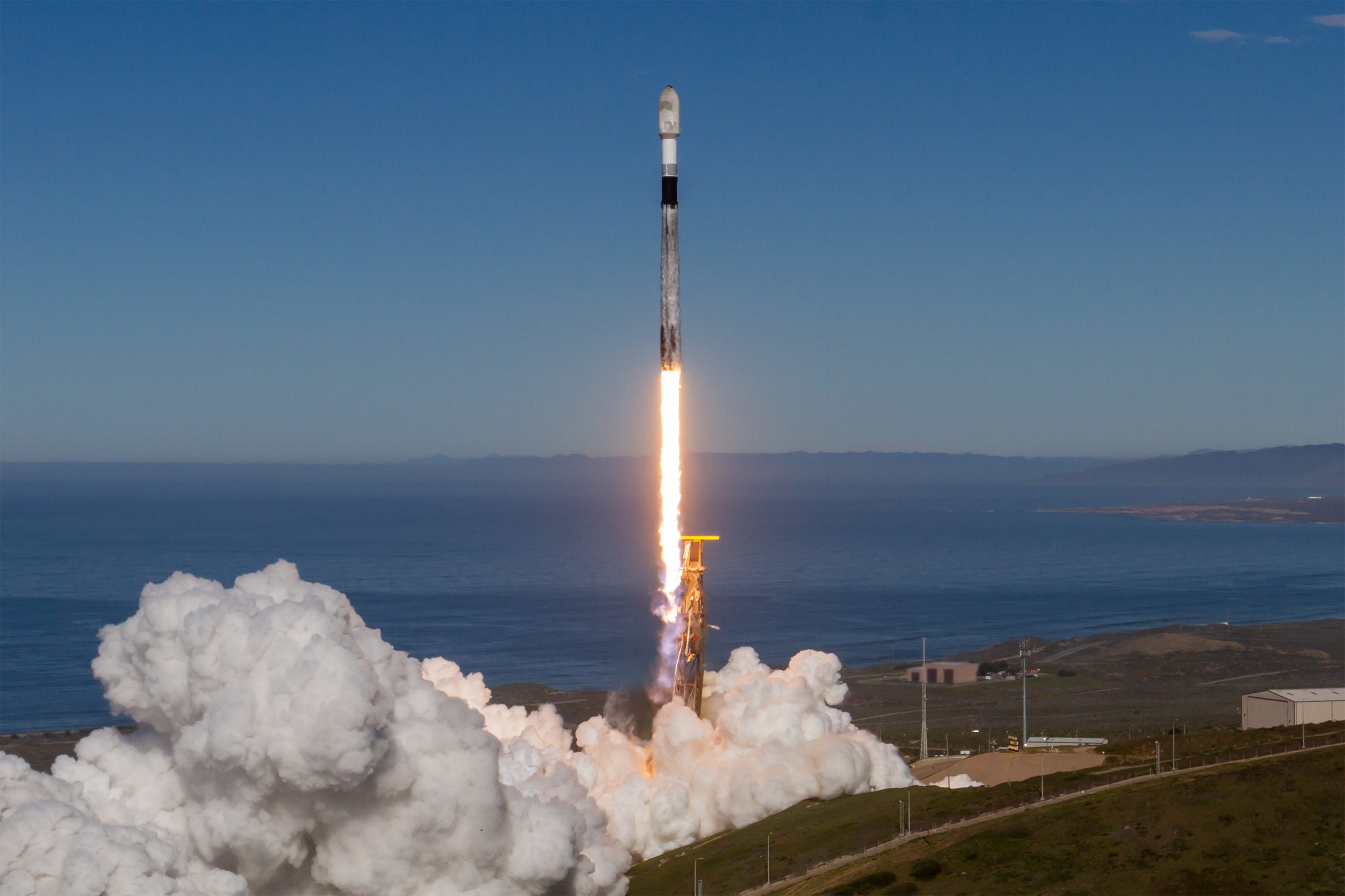
Elon Musk gave a nod to one of SpaceX’s most underrated feats today. Following the successful launch of the Transporter-15 mission, SpaceX seamlessly landed another Falcon 9 booster on a droneship in the middle of the ocean.
It was the booster’s 30th flight, a scenario that seemed impossible before SpaceX became a dominant force in spaceflight.
Elon Musk celebrates a veteran Falcon 9 booster’s feat
SpaceX completed another major milestone for its Smallsat Rideshare program on Friday, successfully launching and deploying 140 spacecraft aboard a Falcon 9 from Vandenberg Space Force Base. The mission, known as Transporter-15, lifted off two days later than planned after a scrub attributed to a ground systems issue, according to SpaceFlight Now. SpaceX confirmed that all payloads designed to separate from the rocket were deployed as planned.
The Falcon 9 used for this flight was booster B1071, one of SpaceX’s most heavily flown rockets. With its 30th mission completed, it becomes the second booster in SpaceX’s fleet to reach that milestone. B1071’s manifest includes five National Reconnaissance Office missions, NASA’s SWOT satellite, and several previous rideshare deployments, among others. Elon Musk celebrated the milestone on X, writing “30 flights of the same rocket!” in his post.
Skeptics once dismissed reusability as unfeasible
While rocket landings are routine for SpaceX today, that was not always the case. Industry veterans previously questioned whether reusable rockets could ever achieve meaningful cost savings or operational reliability, often citing the Space Shuttle’s partial reusability as evidence of failure.
In 2016, Orbital ATK’s Ben Goldberg argued during a panel that even if rockets could be reusable, they do not make a lot of sense. He took issue with Elon Musk’s claims at the time, Ars Technica reported, particularly when the SpaceX founder stated that fuel costs account for just a fraction of launch costs.
Goldberg noted that at most, studies showed only a 30% cost reduction for low-Earth orbit missions by using a reusable rocket. “You’re not going to get 100-fold. These numbers aren’t going to change by an order of magnitude. They’re just not. That’s the state of where we are today,” he said.
Former NASA official Dan Dumbacher, who oversaw the Space Launch System, expressed similar doubts in 2014, implying that if NASA couldn’t make full reusability viable, private firms like SpaceX faced steep odds.
Elon Musk
SpaceX’s Starship program is already bouncing back from Booster 18 fiasco
Just over a week since Booster 18 met its untimely end, SpaceX is now busy stacking Booster 19, and at a very rapid pace, too.
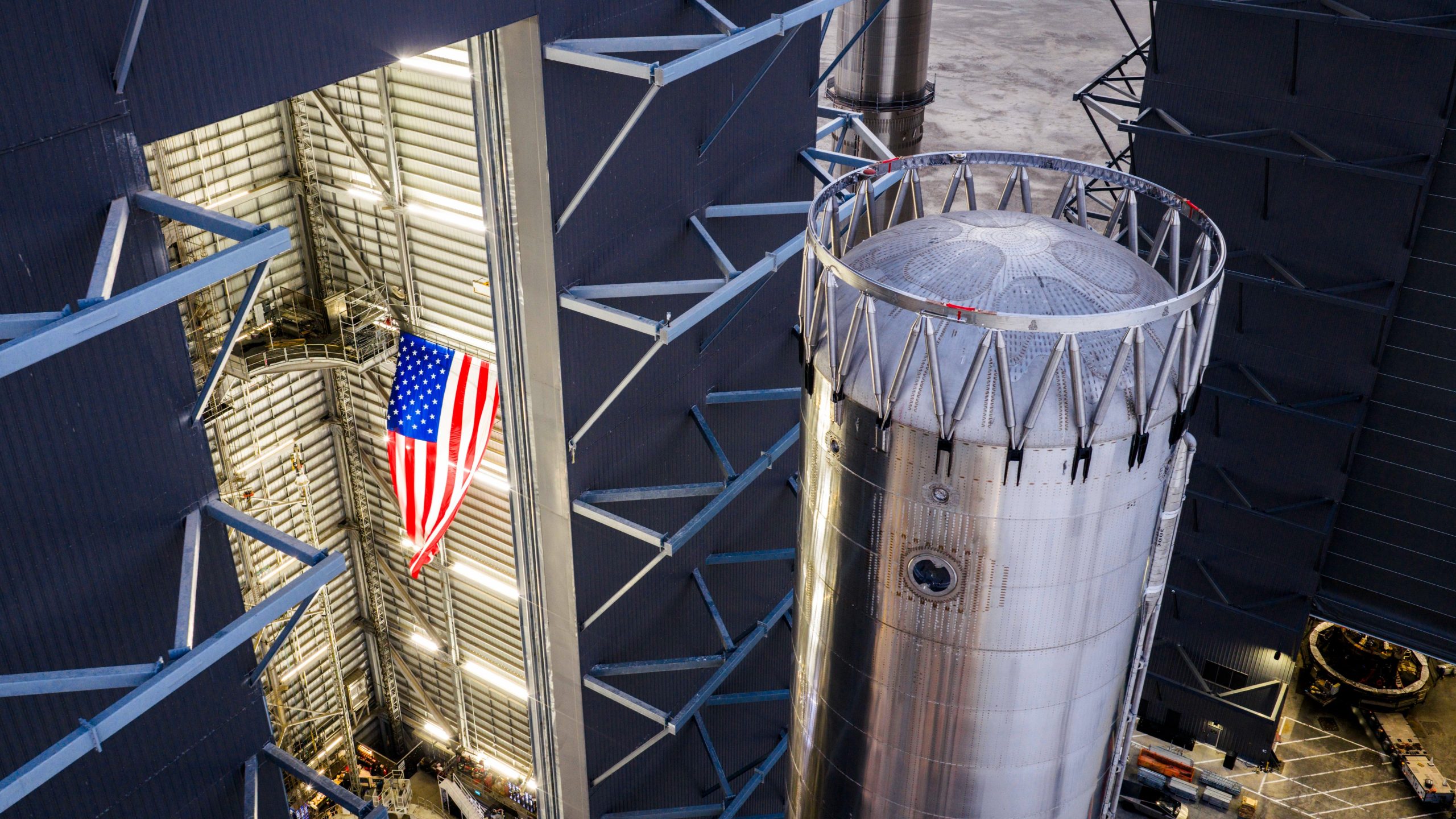
SpaceX is already bouncing back from the fiasco that it experienced during Starship Booster 18’s initial tests earlier this month.
Just over a week since Booster 18 met its untimely end, SpaceX is now busy stacking Booster 19, and at a very rapid pace, too.
Starship V3 Booster 19 is rising
As per Starbase watchers on X, SpaceX rolled out the fourth aft section of Booster 19 to Starbase’s MegaBay this weekend, stacking it to reach 15 rings tall with just a few sections remaining. This marks the fastest booster assembly to date at four sections in five days. This is quite impressive, and it bodes well for SpaceX’s Starship V3 program, which is expected to be a notable step up from the V2 program, which was retired after a flawless Flight 11.
Starship watcher TankWatchers noted the tempo on X, stating, “During the night the A4 section of Booster 19 rolled out to the MegaBay. With 4 sections in just 5 days, this is shaping up to be the fastest booster stack ever.” Fellow Starbase watcher TestFlight echoed the same sentiments. “Booster 19 is now 15 rings tall, with 3 aft sections remaining!” the space enthusiast wrote.
Aggressive targets despite Booster 18 fiasco
SpaceX’s V3 program encountered a speed bump earlier this month when Booster 18, just one day after rolling out into the factory, experienced a major anomaly during gas system pressure testing at SpaceX’s Massey facility in Starbase, Texas. While no propellant was loaded, no engines were installed, and no one was injured in the incident, the unexpected end of Booster 18 sparked speculation that the Starship V3 program could face delays.
Despite the Booster 18 fiasco, however, SpaceX announced that “Starship’s twelfth flight test remains targeted for the first quarter of 2026.” Elon Musk shared a similar timeline on X earlier this year, with the CEO stating that “ V3 is a massive upgrade from the current V2 and should be through production and testing by end of year, with heavy flight activity next year.”
Considering that Booster 19 seems to be moving through its production phases quickly, perhaps SpaceX’s Q1 2026 target for Flight 12 might indeed be more than feasible.
Elon Musk
Elon Musk shares SpaceX’s directive that destroys a prevalent media narrative
Musk’s comments followed Starlink’s initiatives for people affected by severe flooding in Indonesia and Cyclone Ditwah in Sri Lanka.
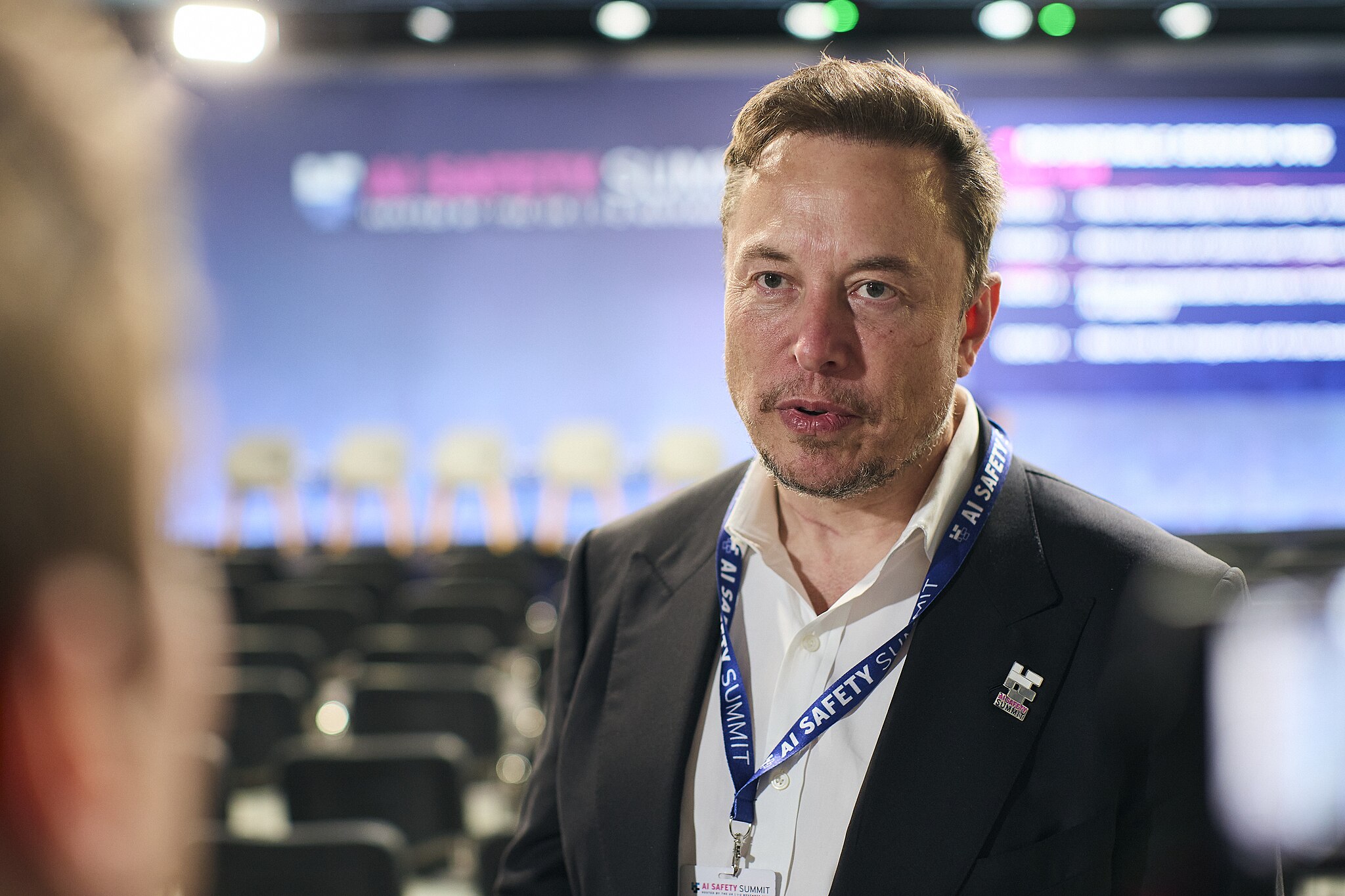
Elon Musk recently shared SpaceX’s standing policy to offer free Starlink service during natural disasters worldwide, highlighting the company’s commitment to pursue aid over profit during times of need.
Musk’s comments followed Starlink’s initiatives for people affected by severe flooding in Indonesia and Cyclone Ditwah in Sri Lanka.
Starlink activates free service in Indonesia and Sri Lanka
Starlink recently announced free service for those impacted by severe flooding in Indonesia’s Sumatra region, partnering with the government to deploy terminals rapidly to the hardest-hit areas. The offer extends to new and existing customers through December, restoring connectivity in zones where traditional networks have failed due to infrastructure damage.
Musk quoted the post on X, writing, “SpaceX standard policy is to make Starlink free whenever there is a natural disaster somewhere in the world. It would not be right to profit from misfortune.”
Starlink extended the same relief to Sri Lanka amid Cyclone Ditwah, coordinating with local authorities for additional support. The cyclone battered the island nation with heavy rains and winds, disrupting communications for thousands. Free access also lasts until year-end, emphasizing Starlink’s role in bridging gaps during crises.
“For those affected by the severe flooding in Indonesia and Sri Lanka in the aftermath of Cyclone Ditwah, Starlink is providing free service to new and existing customers through the end of December 2025. We’re also working with the Indonesian government to rapidly deploy terminals and restore connectivity to the hardest-hit areas on Sumatra, as well as with the Sri Lankan government to provide additional assistance,” Starlink wrote in a post on its official website.
Musk’s companies routinely provide aid
Musk’s firms have a track record of providing critical support in crises, often without fanfare, challenging portrayals of him as a comic book villain intent on enriching himself on the backs of a suffering populace. In January 2024 alone, Tesla opened Superchargers for free in Japan’s Hokuriku region after a magnitude 7.6 earthquake killed at least 55 and injured hundreds.
Similar efforts include Starlink deployments for the 2023 Maui wildfires, 2024 Hurricane Helene in North Carolina, and floods in Texas, where the service was used to help facilitate emergency coordination. These actions, which total millions in waived fees and logistics, demonstrate a proactive ethos among Musk’s companies, with Musk noting in past interviews that such aid stems from engineering solutions over optics.
The initiatives also provide a direct rebuttal of Musk’s characterization on mainstream media, which tends to lean negatively. This has become much more notable in recent years as Musk adopted more conservative policies. These negative sentiments came to a head earlier this year when Tesla stores, vehicles, and even some owners, were attacked during waves of anti-Tesla protests.
